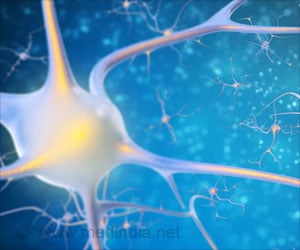Highlights
- Exposure to noise is increasing and children are exposing themselves to high levels of noise very early in life which can cause hidden hearing loss (HHL).
- The only known mechanism for HHL is loss of synapses connecting hair cell with the neurons in the inner ear, due to exposure to loud noises.
- Loss of the Schwann cells that make myelin has been identified as a new mechanism for HHL.
Hidden hearing loss (HHL) is a type of auditory neuropathy that contributes to speech discrimination and intelligibility deficits in people with normal audiological tests. This type of hearing loss affects around 320 million people worldwide.
People with HHL have normal auditory thresholds but defective cochlear neurotransmission.
The only cellular mechanism known for HHL is loss of synapses connecting hair cell with the neurons in the inner ear. This is termed as synaptopathy. This happens due to long-term exposure to loud noises.
New Cause
Myelin insulates the neuronal axons in the ear and is important for the normal conduction of neural impulses.
Researchers used genetic tools to induce loss of myelin in the auditory nerve of mice, modeling Guillain-Barré.
Despite regeneration of myelin in a few weeks, the mice developed a permanent hidden hearing loss because of the damage to a nerve structure called the heminode.
Exposure to loud noises over time leads to loss of synapses.
Only a few synapses are needed to pick up sounds in an auditory test room. But in a noisy environment, the ear must activate specific synapses.
If all synapses are not activated, it will be difficult for people to make sense of the noise or words around them leading to hidden hearing loss.
The newly identified cause of hidden hearing loss due to deficiency in Schwann cells could occur in individuals who have already had noise exposure-driven hidden hearing loss as well.
Conclusion
"Exposure to noise is increasing in our society, and children are exposing themselves to high levels of noise very early in life," Corfas says. "It's clear that being exposed to high levels of sound might contribute to increases in hidden hearing loss."
"Both forms of hidden hearing loss, noise exposure and loss of myelin, can occur in the same individual for an additive effect," Corfas says.
There are no current treatments for hidden hearing loss. But better understanding of the condition will lead to the development of drugs to treat it.
"Our findings should influence the way hidden hearing loss is diagnosed and drive the future of clinical trials searching for a treatment," Corfas says. "The first step is to know whether a person's hidden hearing loss is due to synapse loss or myelin/heminode damage."
The report is published in Nature Communications.
Reference
- Gabriel Corfas et al. Transient auditory nerve demyelination as a new mechanism for hidden hearing loss. Nature Communications; (2017) doi:10.1038/ncomms14487
Source-Medindia















